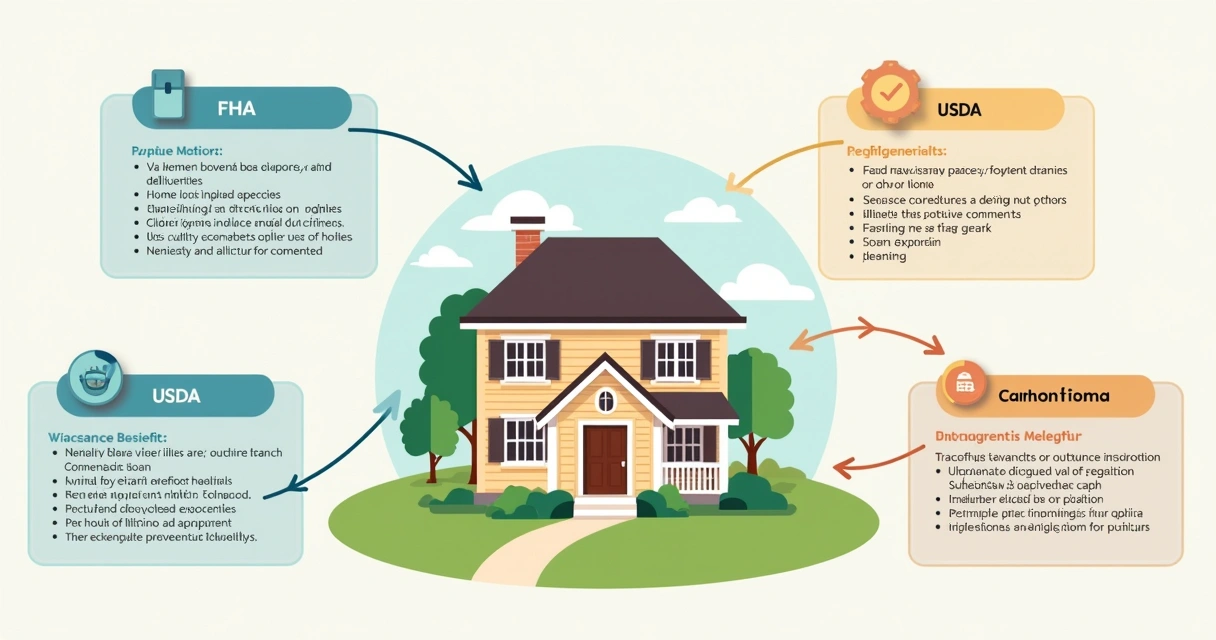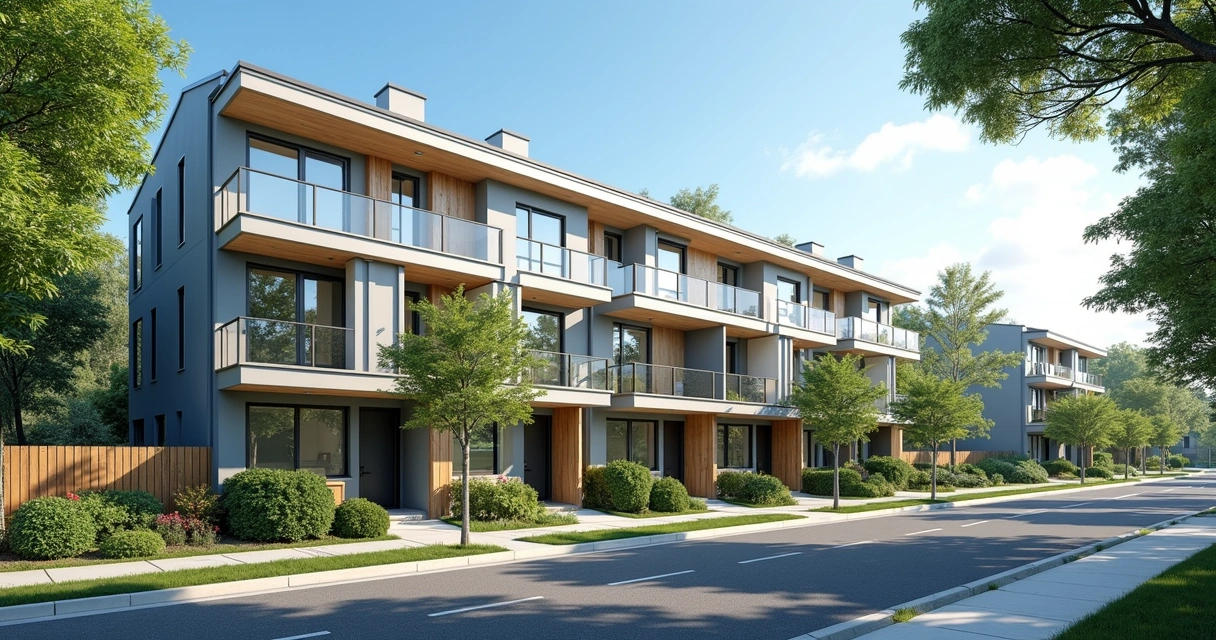Whether you dream of a front porch sunrise or a downtown condo, buying your first home in the U.S. always feels like a bold leap. For many years, I have witnessed how the path to homeownership weaves together anticipation, fear, and pure joy. I believe understanding the options and incentives that exist—and how they relate to your personal story—is truly empowering.
As trends shift and market pressures mount, what does it mean to access the American dream for the first time today? Is there hope, even when headlines warn of steep prices and tighter credit? This guide brings you through every major step: from available government loans to grants, from financial planning to those little details often overlooked. I draw from experience, respected industry sources, and my connection to projects like Heart Mortgage, which is dedicated to making these opportunities accessible and clear.
Understanding today’s homeownership landscape
I find it helpful to begin with a snapshot of reality. The landscape for American buyers—especially those just entering the market—has changed dramatically since the days of easy credit and abundant listings.
Let’s look at a few recent shifts:
- Homeownership rates among younger households remain lower than before the 2008 crisis, peaking at around 46–47% but falling to 36.8% by 2015 and still trailing pre-recession levels by 2019, according to analysis by the U.S. Census Bureau.
- Concerns about affordability are growing fast—69% of Americans report being ‘very concerned’ about the cost of housing, up sharply in recent years, as detailed by the Pew Research Center.
- Yet, despite these worries, homeownership rates overall show stable improvement. Census Bureau data reflects a homeownership rate of 65.4% in Q3 2025.
- There is a growing trend toward cash purchases—likely linked to high interest rates and investors jumping in—but traditional mortgages remain the main path for most first-time buyers.
- Multigenerational homes are becoming more common, as families blend resources to manage rising costs.
The housing sector itself continues to play a big economic role—claiming over a quarter of the nation’s investment and about 5% of the U.S. economy.
The first steps: Getting ready to buy your first home
Before I get into the specifics of loans or grants, it’s wise to step back and talk about preparation. I’ve often seen homebuyers launch into the process before understanding what’s really involved. Regret usually follows.
Assessing your finances
Start with a true, unfiltered look at your finances. List your income (all of it), regular expenses (down to the streaming subscriptions), any debts, and what’s available in savings.
Calculate your debt-to-income (DTI) ratio. This is simply your monthly debt payments divided by gross income, expressed as a percentage. Lenders use your DTI to decide if you’re ready for a mortgage—many programs require it to be under 43%, sometimes less.
Don’t forget: property taxes, insurance, maintenance, and closing costs are all part of the big picture. A reliable tool for this planning is the home affordability calculator at Heart Mortgage, which shows a realistic estimate based on your details.
Understanding down payment needs
Traditional wisdom said you needed 20%, but many first-time buyers bring far less. Some loans now allow as little as 3% down—or sometimes nothing. Still, higher down payments lower long-term costs and open more options.
Your down payment affects your loan terms, your monthly budget, and even your competitiveness against other buyers.
Building your credit
Your credit score is like your passport to better mortgage rates. Most programs welcome buyers with mid-600s credit, but a score above 700 is preferred (and gets lower rates). If you have past credit issues, there are ways to rebuild, and projects like Heart Mortgage often help clients navigate this road.
Getting pre-qualified and pre-approved
- Pre-qualification is an informal estimate of how much you might borrow, based on self-reported finances.
- Pre-approval requires documents and a credit check; it’s the first step toward competing for homes seriously.
In my opinion, pre-approval could be your secret weapon. It shows sellers you can truly close.
 The main types of loans for first home buyers
The main types of loans for first home buyers
I often hear confusion about which loans are best for new buyers. Below, I explain the most popular programs, each with unique requirements and perks. Government-backed loans form the backbone for many buyers, but conventional options deserve a look too.
FHA loans: Flexibility and lower credit minimums
The Federal Housing Administration (FHA) loan is well-known among first-timers. It was designed for those who may not have perfect credit or a big pile of savings.
- Down payments as low as 3.5% (with a credit score of 580+)
- Lower minimum credit scores accepted (sometimes as low as 500 with a 10% down payment)
- Lenient guidelines for prior financial setbacks
- Required mortgage insurance (both up-front and annually)
FHA loans give a shot at homeownership to those shut out by traditional banks.
For a more detailed review, I’d suggest the FHA loan guide for first-time and low-credit homebuyers by Heart Mortgage. It’s comprehensive, yet simple enough for a quick morning read.
VA loans: For veterans and military families
If you’re active-duty, a veteran, or sometimes a surviving spouse, the Department of Veterans Affairs (VA) home loan offers powerful benefits:
- Zero down payment needed (100% financing)
- No private mortgage insurance (PMI)
- Flexible guidelines on credit and income
- Funding fee applies (usually financed into the loan)
While I haven’t experienced a VA loan personally, many close clients share the unmatched relief of skipping a down payment. And, honestly, no PMI really adds up.
USDA loans: For rural and suburban homes
Moving a bit outside the city? The U.S. Department of Agriculture (USDA) backs loans tailored to less-populated regions.
- Zero down payment is possible
- Below-market interest rates
- Income limits apply (for low- to moderate-income buyers)
- Only specific geographic areas qualify
I often think buyers should take a closer look at USDA—even a small suburban town can make you eligible.
Conventional loans: For strong credit and reliable finances
Often associated with a 20% down payment, most buyers can actually qualify for a conventional mortgage with as little as 3% down, especially with solid credit and income.
- Lower long-term costs if you put down 20% or more (no PMI)
- Often better rates with strong credit (usually 740+)
- Stricter guidelines and higher credit required
Find more about these alternatives in Heart Mortgage’s summary of how conventional mortgages work for first-time home buyers.
 Special programs and local assistance
Special programs and local assistance
Most states, and many cities or counties, offer extra help to people buying property for the first time. These programs usually include:
- Down payment assistance (DPA): Loans or grants to cover part or all of your down payment.
- Forgivable loans or silent second mortgages.
- Tax credits for mortgage interest or property tax payments.
- Targeted incentives for teachers, first responders, or lower incomes.
The Heart Mortgage resource on first home buyer programs has a frequently updated directory. Eligibility rules can shift, so always check with local housing agencies or an advisor who follows current guidelines closely.
Financial support: Grants, credits, and assistance programs
Few things are as satisfying as hearing, “You’ve qualified for a grant.” I’ve seen it transform buyer confidence instantly.
There are three main types of financial aid for American home buyers:
- Down payment grants, which are outright gifts that don’t need repayment if you meet basic conditions (like owning the home for a minimum time).
- Deferred or forgivable loans, which only need to be repaid if you move or refinance too soon.
- Tax credits or deductions, which lower the amount you owe the government each year as a reward for buying property.
Some doors don’t open until you ask about assistance that you never knew existed.
Grants vary by state and area—sometimes, down payment assistance can reach $10,000 or more. Conditions may include income caps, home price ceilings, first-time buyer status, or educational workshops.
If you love detail, I’d recommend Heart Mortgage’s complete guide to mortgage loans and programs for home buyers for a broader list of U.S. options.
Federal tax incentives
First-time buyers can sometimes access a Mortgage Credit Certificate (MCC), which gives a dollar-for-dollar federal tax credit for a share of the annual mortgage interest. Some states and local programs offer extra credits or deductions.
Tax benefits can mean hundreds or even thousands of dollars annually for those who qualify.
Understanding the costs: Beyond the mortgage payment
It can be easy to fixate on your mortgage payment and forget the rest of the story. But, in my experience, closing costs are the top surprise for first-time buyers.
- Closing costs usually run between 2% and 5% of the purchase price, including loan fees, taxes, insurance, and title charges.
- Upfront mortgage insurance (for FHA or other programs) and escrow deposits can also add up.
Be sure to budget for:
- Initial repairs or upgrades
- Annual property taxes (varies greatly by location)
- Homeowner’s insurance (required by most lenders)
- Ongoing utilities and maintenance
A trusted lender—like Heart Mortgage—should outline your full “cash to close” at the pre-approval stage.
The search and purchase process
After all the budgeting, eligibility checks, and paperwork, comes the house hunt. I’m always reminded here: it’s part logic, part emotion. It makes sense to choose your team carefully.
Among the professionals you’ll likely work with:
- Real estate agents (I firmly believe a good one is a true guide, especially for beginners)
- Lender or broker (keeps your financing on track)
- Attorney (in some states, required for closing)
- Inspectors and appraisers (to check safety, value, and condition)
 Inspections and appraisals
Inspections and appraisals
Home inspections are not required by law, but skipping them puts your investment at risk. An inspection reports any immediate issues with the roof, foundation, appliances, or structure. I’ve watched buyers negotiate major repairs based on findings—a process that is never fun, but sometimes very necessary.
Appraisals are a lender requirement. They make sure the value supports your loan amount. If the appraisal comes in low, you may need to renegotiate or bring extra money to closing.
Home insurance and title insurance
Homeowner’s insurance covers fire, theft, liability (and more, depending on specifics). Your lender will require it before funding your loan. Title insurance, meanwhile, protects you if another party later claims the house belongs to them. Minor, unseen paperwork glitches can become big headaches down the line.
Current market trends shaping first-time buyers
I feel a responsibility to speak plainly about market trends. Over the past years, costs have continued to climb in many areas, interest rates have bounced higher, and the average age of new buyers is rising.
- Q4 2020 saw a historic increase: About 2.1 million more owner-occupied households year over year, even amid the pandemic, as shown by the Pew Research Center.
- For many, affording a home is not just about rates or prices, but wages that have not kept up.
- People are buying homes later—instead of mid-20s, it’s drifting towards early or mid-30s, as reflected in Census Bureau analyses linked above.
- Cash offers are more common, squeezing out mortgage buyers in hot markets.
- Multigenerational homes help families combine finances for larger properties or to assist aging relatives.
 Especially in faster-growing metro areas, competition for affordable properties is intense. I encourage patience and flexibility—sometimes the right home is not the first one you find. Yet, with the right preparation, you can step ahead.
Especially in faster-growing metro areas, competition for affordable properties is intense. I encourage patience and flexibility—sometimes the right home is not the first one you find. Yet, with the right preparation, you can step ahead.
Role of projects like Heart Mortgage
I find projects like Heart Mortgage play a strong role, especially for first-timers who want clarity, tailored advice, and personal guidance. Their specialists focus on making each step transparent, advocating for buyers, and suggesting programs that fit unusual financial circumstances. That makes a difference, and in my experience, cuts down stress from beginning to end.
If you want a program overview, options for low- or zero-down, or just someone to answer “silly” questions (no such thing), a dedicated first-time resource matters.
Conclusion: Your first home journey, simplified
The path to your first front door will almost always include surprises, doubts, and pride. In my opinion, understanding your options is the best shield against disappointment—and the best key to those magical moments when an offer is accepted or when you first walk into an empty living room that’s now yours.
From FHA and VA loans to grants, from down payment assistance to multigenerational homes, the path is rarely lonely: professionals, programs, and information communities like Heart Mortgage are there to walk it with you. It pays to get informed, compare aid options, and prepare each step from budgeting through move-in day.
Your dream address isn’t just an address—it’s the start of your story.
If you’re ready to take the next step, explore the resources, calculators, and expert advice from Heart Mortgage. Begin your journey with confidence—reach out for a conversation or a quote, and let experience guide you home.
Frequently asked questions
What is a first-time homebuyer loan?
A first-time homebuyer loan is a mortgage program designed with special advantages for people who have never owned a home (or not owned one in several years). These loans often feature lower down payments, more flexible credit requirements, and sometimes assistance with closing costs or mortgage insurance.They are available through both government-backed programs (like FHA, VA, and USDA) and certain conventional mortgages. If you’re unsure where to begin, consult a resource like Heart Mortgage’s first home buyer program directory.
How do I qualify for first-time grants?
First, you’ll usually need to meet local definitions of “first-time buyer”—often, not having owned a home in the last three years. Next, most grants consider your income compared to area averages, as well as the home’s price and location.Usually, you’ll need to attend an approved homebuyer education class.Some grants also ask that you live in the home a minimum number of years to avoid paying funds back. Connect with a lender or agency early, and share your income, family size, and purchase plans so they can suggest the best grants.
Where can I find first-time homebuyer programs?
You’ll find programs at the federal, state, and local levels. Search your state housing finance agency website for regional options. Local governments, community organizations, and lenders (including specialized advisors at Heart Mortgage) are good resources.The Heart Mortgage first-home buyer page outlines both national and area-specific programs.Check also with your real estate agent, who may know limited-time or special neighborhood offers.
Are there special loans for first-time buyers?
Yes, special loans like FHA, VA, and USDA are especially popular for first-timers. Certain conventional loans also allow smaller down payments for those who qualify. Each has its own guidelines, but most aim to help buyers who may not have big down payments or perfect credit.Explore details in Heart Mortgage’s complete home loans guide to see which aligns best with your situation and goals.
How much do I need for a down payment?
For most first home mortgages, you’ll need anywhere from 0% (for VA or USDA loans) to 3%–3.5% (for FHA and some conventional loans).Bringing more (such as 10% or 20%) can reduce your interest rate and eliminate extra costs like private mortgage insurance. Still, with the right programs, a modest down payment can get you in the door. Use tools like the Heart Mortgage affordability calculator to see what’s possible in your price range.





